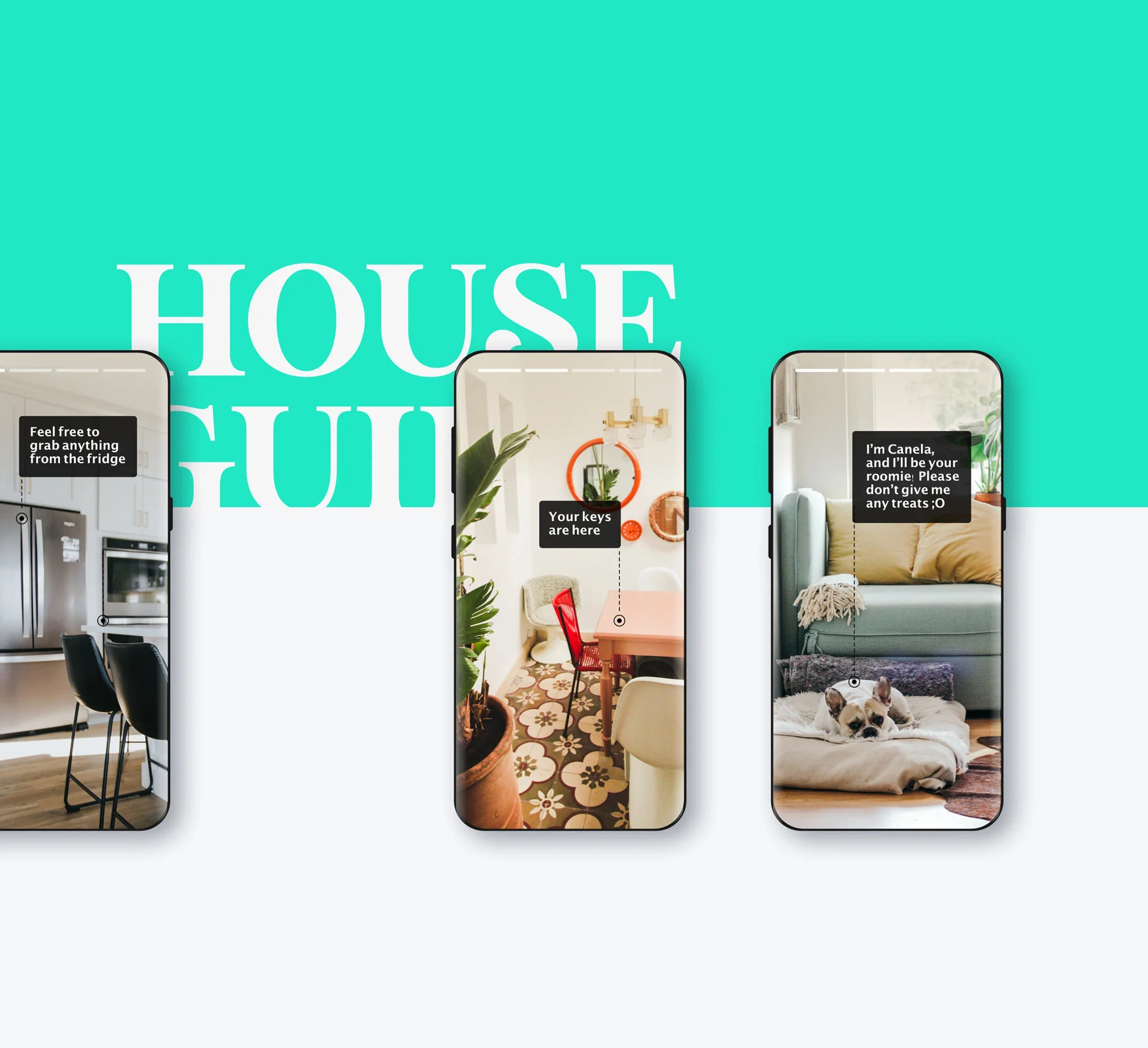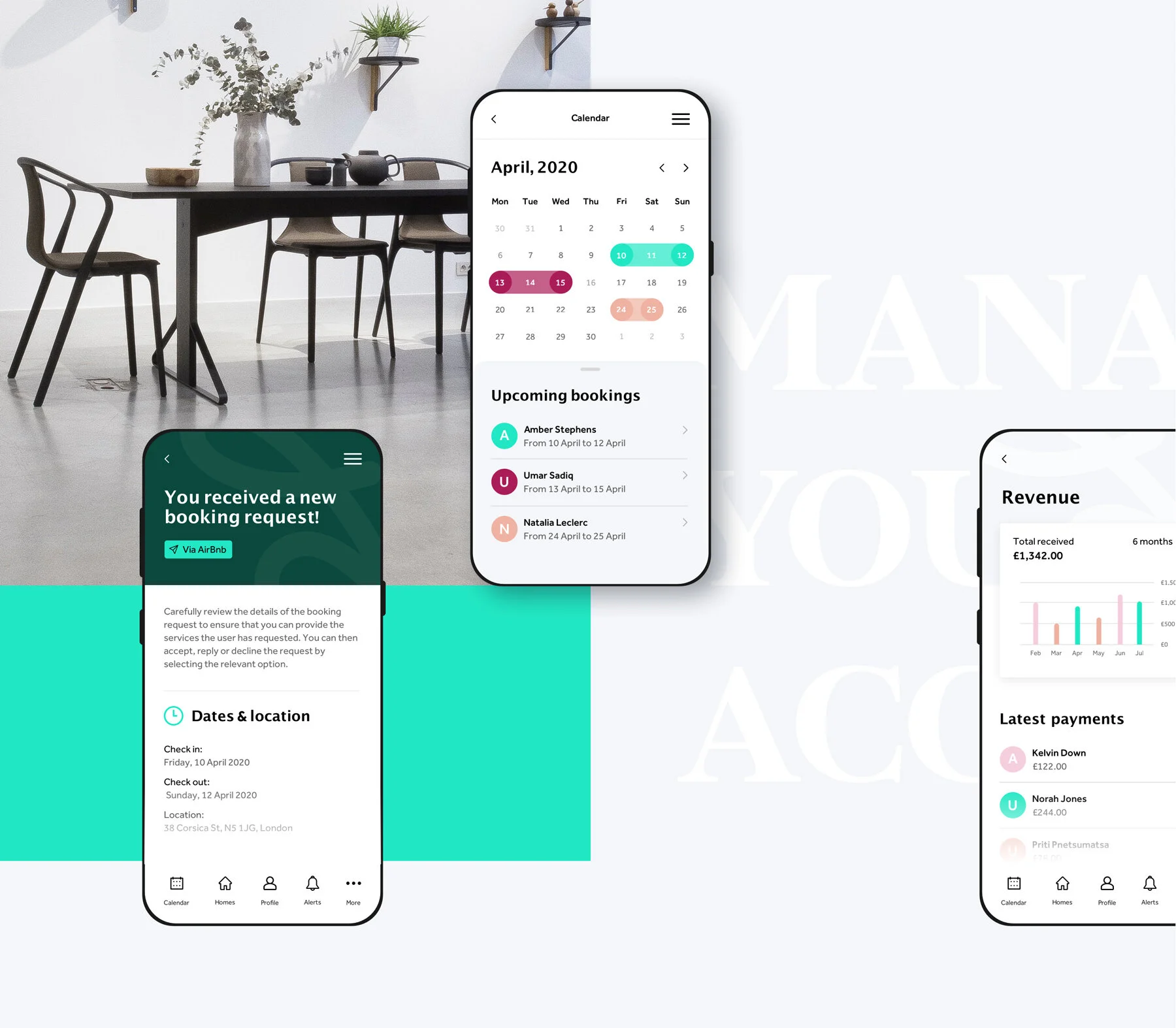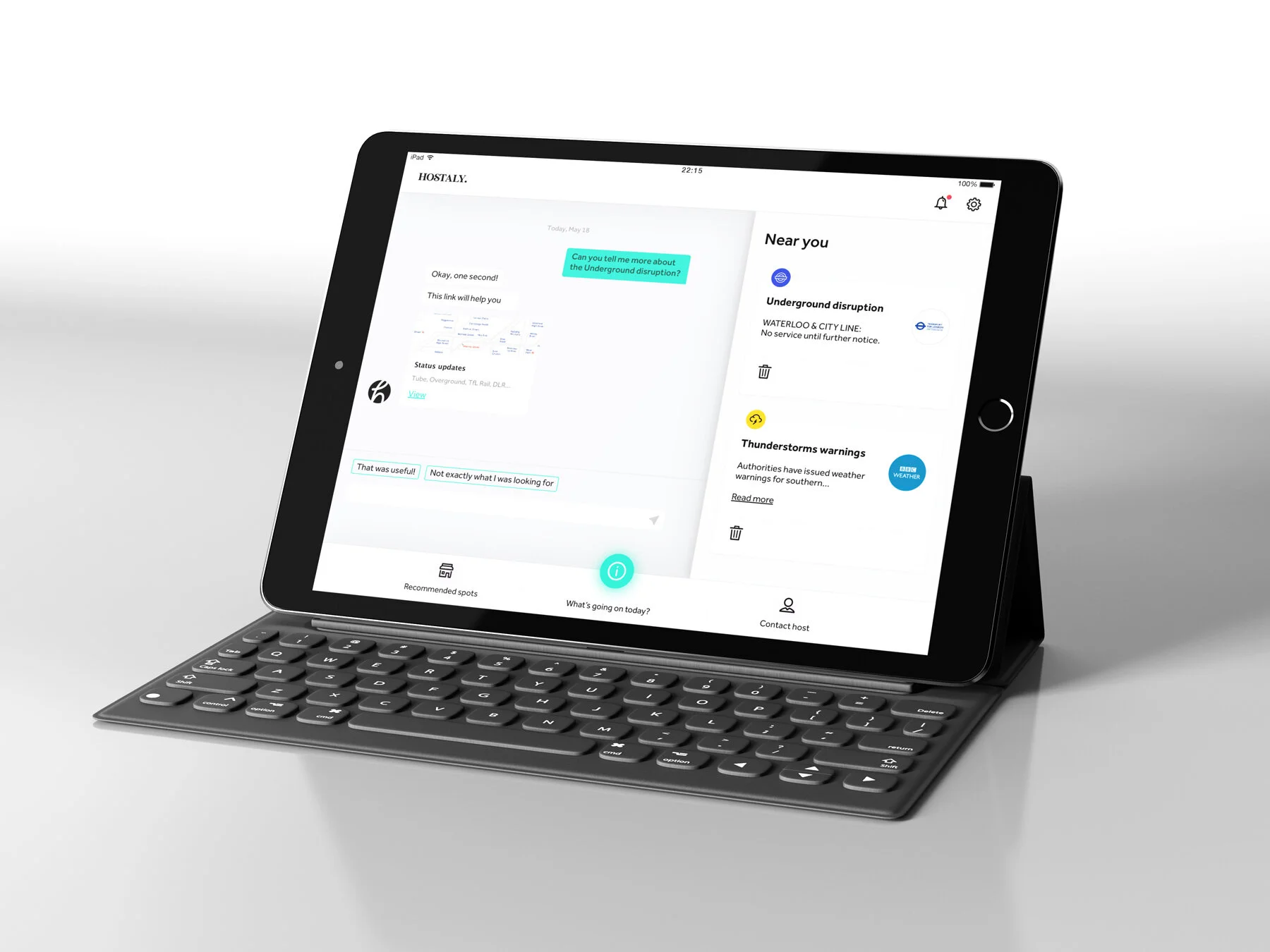
How can a holiday rental management service adapt to ‘the new normal’?
Following the disruption caused by the COVID-19 pandemic, the team at Hostaly knew that they had to rethink multiple aspects of their new app before it launched. To prepare for what we now call ‘the new normal’, Hostaly asked me to review their app’s current user and customer touchpoints, and come up with new blue-sky interactions and visuals that can adapt to the potential changes our society is going to adopt.
Mesures like social distancing, remote working and the spread of self-protection advice (among others) have played a key role in reducing the impact that the pandemic could have had in our society. However, we all know that things are changing already, and multiple industries, services and products are evolving to keep us protected and safe. The following case study shows how this post-COVID-19 mindset could has been reflected on a holiday rentals management app.
The project in a nutshell…
THE OBJECTIVE
Review, refine and redesign a series of touchpoints and user interactions featured in Hostaly’s app, ensuring that the results will be future-proof and will work as a way to adapt the product to the ‘new normality’ we’re encountering after the COVID-19 pandemic.
THE APPROACH
After analysing various UX research reports and gathering information on how COVID-19 will impact on the design process of future digital products and services, I designed a series of user cases and wireframes which addressed the most problematic touchpoints. These were then turned into final visuals.
MY ROLE
I led the ideation, wireframing and prototyping stages of the project, acting as an experience strategist, an interaction designer specialist and a visual designer. I also collaborated with user researchers to gather key qualitative data insights to inform my design process.
“The hope, then, is that we do everything we can to address these issues, and prepare our product in a different kind of way.”
– Hostaly meeting notes
A new way to interact with guests
“Nothing matches a friendly face to face welcome from a host… social distancing is going to be a problem.”
The phrase above immediately captured my attention. They were right. As a guest there is nothing like meeting face to face with your host while they show you every little detail of the house, and probably give you some valuable tips for you to enjoy your stay.
To solve this, I came up with a ‘small-stories’ interaction pattern which we’d later call the ‘Welcome tour’. This would consist of a series of short video stories (much like Instagram stories) which show around the guest, provide important information about the place and can be used to provide any useful tips or give any recommendations.
Every detail counts. That is why we integrated the app with Nuki’s smart locks and Google home, further reducing the physical contact of the guest and the services in the rental homes.
01. A photo of how a Nuki smart lock and a Google Home device.
01. Some of the introductory pages in the printed version of the DASG.
Implementing a conversational alerts system to keep the guest informed
Perhaps a feature that was less related to COVID-19 prevention measures, but equally useful in terms of health and safety. We implemented an alerts system for the on-site device (a tablet that’s always in the rental apartment which is the guest’s main touchpoint) that helps users stay on top of local events and warnings in the area, allowing them to plan their stay accordingly.
The result
Hostaly were clear, they wanted to implement measures to set new standards and improve their business and the businesses of their users. With no end to the COVID-19 pandemic in sight, further work feedback needs to be received. But user testing has revealed that the new interactions seem to have impressed Hostaly’s users.
KEY LEARNING
Design’s main purpose is to solve problems, and once again this seems to be the case when designing for the aftermath of a pandemic. Designing for the unknown, or speculative design, are fields that don’t deserve enough attention from most of the design community, and certainly, learning about that during the course of this project has made all the difference.
TOOLS & SOFTWARE USED
Adobe XD
After Effects CC
Figma
Zeplin




